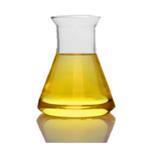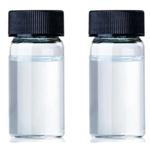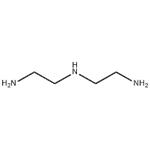- Diethylenetriamine
-

- $11615.00 / 1Tons
-
2024-04-24
- CAS:111-40-0
- Min. Order: 1Tons
- Purity: 99.99%
- Supply Ability: 100Tons
- Diethylenetriamine
-

- $50.00 / 1kg
-
2024-04-24
- CAS:111-40-0
- Min. Order: 1kg
- Purity: 99%
- Supply Ability: 20Tons
- Diethylenetriamine
-

- $20.00 / 1000KG
-
2023-12-24
- CAS:111-40-0
- Min. Order: 1KG
- Purity: 99%
- Supply Ability: 4500 ton/year
|
| | Diethylenetriamine Basic information |
| Product Name: | Diethylenetriamine | | Synonyms: | (Aminoethyl)ethanediamine;1,4,7-Triazaheptane;1,5-Diamino-3-azapentane;2,2’-diamino-diethylamin;2,2’-iminobis(ethanamine);2,2’-iminobis-ethylamin;2,2’-iminobis-ethylenediamine,n-(2-aminoethyl)-ethylamin;2-Ethanediamine,N-(2-aminoethyl)-1 | | CAS: | 111-40-0 | | MF: | C4H13N3 | | MW: | 103.17 | | EINECS: | 203-865-4 | | Product Categories: | Organics;organic amine | | Mol File: | 111-40-0.mol |  |
| | Diethylenetriamine Chemical Properties |
| Melting point | -40 °C | | Boiling point | 206 °C | | density | 0.955 g/mL at 25 °C(lit.) | | vapor density | 3.6 (vs air) | | vapor pressure | 0.08 mm Hg ( 20 °C) | | refractive index | n20/D 1.484(lit.) | | Fp | 90 °C | | storage temp. | Store below +30°C. | | solubility | Chloroform (Soluble), Methanol (Slightly) | | form | Liquid | | pka | pK1:4.42(+3);pK2:9.21(+2);pK3:10.02(+1) (25°C) | | color | Clear | | Odor | Strong ammoniacal; mildly ammoniacal. | | PH | >12 (100g/l, H2O, 20℃) | | explosive limit | 1-10%(V) | | Water Solubility | miscible | | Sensitive | Air Sensitive | | BRN | 605314 | | Exposure limits | ACGIH: TWA 1 ppm (Skin)
NIOSH: TWA 1 ppm(4 mg/m3) | | Stability: | Stable, but absorbs carbon dioxide from the air. Incompatible with strong oxidizing agents, copper and its alloys. | | InChIKey | RPNUMPOLZDHAAY-UHFFFAOYSA-N | | LogP | -1.58 at 20℃ | | CAS DataBase Reference | 111-40-0(CAS DataBase Reference) | | NIST Chemistry Reference | 1,2-Ethanediamine, N-(2-aminoethyl)-(111-40-0) | | EPA Substance Registry System | Diethylenetriamine (111-40-0) |
| | Diethylenetriamine Usage And Synthesis |
| Description | Diethylenetriamine is a hardener in epoxy resins of the
Bisphenol A type. It has been reported as a sensitizer in
ultrasonic baths for cleaning jewels, in synthetic
lubricants and in carbonless copy paper. | | Chemical Properties | Diethylenetriamine is a corrosive yellow liquid and a solvent. It has a strong ammonia odor and is prone to absorbing moisture. It can dissolve in water, acetone, benzene, ether, methanol, but is not soluble in n-heptane. | | Uses | Diethylenetriamine is a solvent for sulfur, acidic gas, resin and dye intermediates for organic synthesis; saponification agent for acidic materials; fuel component; hardener for epoxy resins. | | Production Methods | Diethylenetriamine is produced by the reaction of ethylene dichloride with ammonia. Diethylenetriamine is used in biological studies, for polyamines inhibition to carbonic anhydrases by anchoring to the zinc-coordinated water molecule. | | Definition | ChEBI: Diethylenetriamine is a triamine and a polyazaalkane. | | Synthesis Reference(s) | Journal of the American Chemical Society, 105, p. 5002, 1983 DOI: 10.1021/ja00353a025 | | General Description | A yellow liquid with an ammonia-like odor. Less dense than water. Corrosive to metals and tissue. Vapors heavier than air. Burns, although possibly difficult to igntie. Toxic oxides of nitrogen produced during combustion. Used as a solvent for plastics and dyes and in chemical synthesis. | | Air & Water Reactions | Soluble in water. | | Reactivity Profile | Diethylenetriamine neutralizes acids in exothermic reactions to form salts plus water. May be incompatible with isocyanates, halogenated organics, peroxides, phenols (acidic), epoxides, anhydrides, and acid halides. Flammable gaseous hydrogen may be generated in combination with strong reducing agents, such as hydrides. | | Health Hazard | Prolonged breathing of vapors may cause asthma. Liquid burns skin and eyes. A skin rash can form. | | Health Hazard | Brief contact with concentrated diethylenetriamine can produce severe local injury
to the eyes and skin resembling the effect from strong base. Human subjects are
susceptible to sensitization responses either as dermatitis or an asthma-like response.
A time-weighted average of 1 p.p.m. is recommenced for diethylenetriamine
(ACGIH 1986). | | Fire Hazard | Special Hazards of Combustion Products: Irritating vapors are generated when heated. | | Flammability and Explosibility | Non flammable | | Industrial uses | Diethylenetriamine is used as an intermediate in the production of reactive
polyamide resins, and in the production of aminoamides and imidazolines from
fatty acids. It is also used in the production of paper wet strength resins and
piperazine. Diethylenetriamine serves as a solvent for sulfur, acid gases, resins and
dyes (HSDB 1989). | | Contact allergens | Diethylenetriamine is a hardener in epoxy resins of the
Bisphenol A type. It has been reported to be a sensitizer
when used in an ultrasonic bath for cleaning jewels, in
synthetic lubricants, or in carbonless copy paper. | | Safety Profile | Poison by skin contact
and intraperitoneal routes. Moderately toxic
by ingestion. Corrosive. A severe skin and
eye irritant. High concentration of vapors
causes irritation of respiratory tract, nausea,
and vomiting. Repeated exposures can cause
asthma and sensitization of skin. Combus
uble when exposed to heat or flame; can
react with oxidizing materials. Mxture with nitromethane is a shock-sensitive explosive.
Ignites on contact with cellulose nitrate of
high surface area. To fight fire, use alcohol
foam. When heated to decomposition it
emits toxic fumes of NOx. See also
AMINES. | | Potential Exposure | PrimaryIrritant. This material is used in textile finishes, fungicides,corrosion inhibitors, adhesives, asphalt additives, as a solvent for sulfur, acid gases, resins, and dyes. | | First aid | If this chemical gets into the eyes, remove anycontact lenses at once and irrigate immediately for at least15 min, occasionally lifting upper and lower lids. Seek medical attention immediately. If this chemical contacts theskin, remove contaminated clothing and wash immediatelywith soap and water. Seek medical attention immediately. Ifthis chemical has been inhaled, remove from exposure,begin rescue breathing (using universal precautions, including resuscitation mask) if breathing has stopped and CPR ifheart action has stopped. Transfer promptly to a medicalfacility. When this chemical has been swallowed, get medical attention. If victim is conscious, administer water ormilk. Do not induce vomiting. | | Carcinogenicity | DETA has a strong ammonia-like odor,
but it does not provide adequate warning of
hazardous concentrations.
The 2003 ACGIH threshold limit valuetime-
weighted average (TLV-TWA) for diethylene
triamine is 1ppm (4.2mg/m3) with a
notation for skin absorption. | | Metabolism | Diethylenetriamine is readily absorbed through the gastrointestinal tract and 96%
of the administered dose is excreted within 48 h (USEPA 1983a). Roughly equal
amounts are excreted in the feces and urine with at least 4 metabolites being
detected (but not identified) in the latter. Only a small proportion (<2%) was
recovered as expired carbon dioxide. Any residual remaining in the animal was
found primarily in kidney, liver, bladder and large intestine. | | storage | Color Code—White: Corrosive or Contact Hazard;Store separately in a corrosion-resistant location. Prior to working with this chemical you should be trained on itsproper handling and storage. Before entering confined spacewhere this chemical may be present, check to make surethat an explosive concentration does not exist. Store intightly closed containers in a cool, well-ventilated areaaway from acids, halogenated organics, and oxidizers (suchas perchlorates, peroxides, chlorates, nitrates, and permanganates). Protect containers from physical damage. Sourcesof ignition, such as smoking and open flames, are prohibited where this chemical is used, handled, or stored in amanner that could create a potential fire or explosion hazard. Metal containers involving the transfer of=gallons ormore of this chemical should be grounded and bonded.Drums must be equipped with self-closing valves, pressurevacuum bungs, and flame arresters. Use only nonsparkingtools and equipment, especially when opening and closingcontainers of this chemical. | | Shipping | This material requires a “CORROSIVE” label. Itfalls in Hazard Class 8 and Packing Group II. | | Purification Methods | Dry the amine with Na and distil, preferably under reduced pressure, or in a stream of N2. [Beilstein 4 IV 1284.] | | Incompatibilities | Forms explosive mixture with air. Ignitesspontaneously on contact with cellulose nitrate. Contact withsilver, cobalt, or chromium compounds may cause explosions.Incompatible with acids, halogenated organics, organic anhydrides, isocyanates, vinyl acetate, acrylates, substituted allyls,alkylene oxides, epichlorohydrin, ketones, aldehydes, alcohols, glycols, mercury, phenols, cresols, caprolactum solution,strong oxidizers. Attacks aluminum, copper, copper alloys,lead, tin, zinc and alloys. |
| | Diethylenetriamine Preparation Products And Raw materials |
|